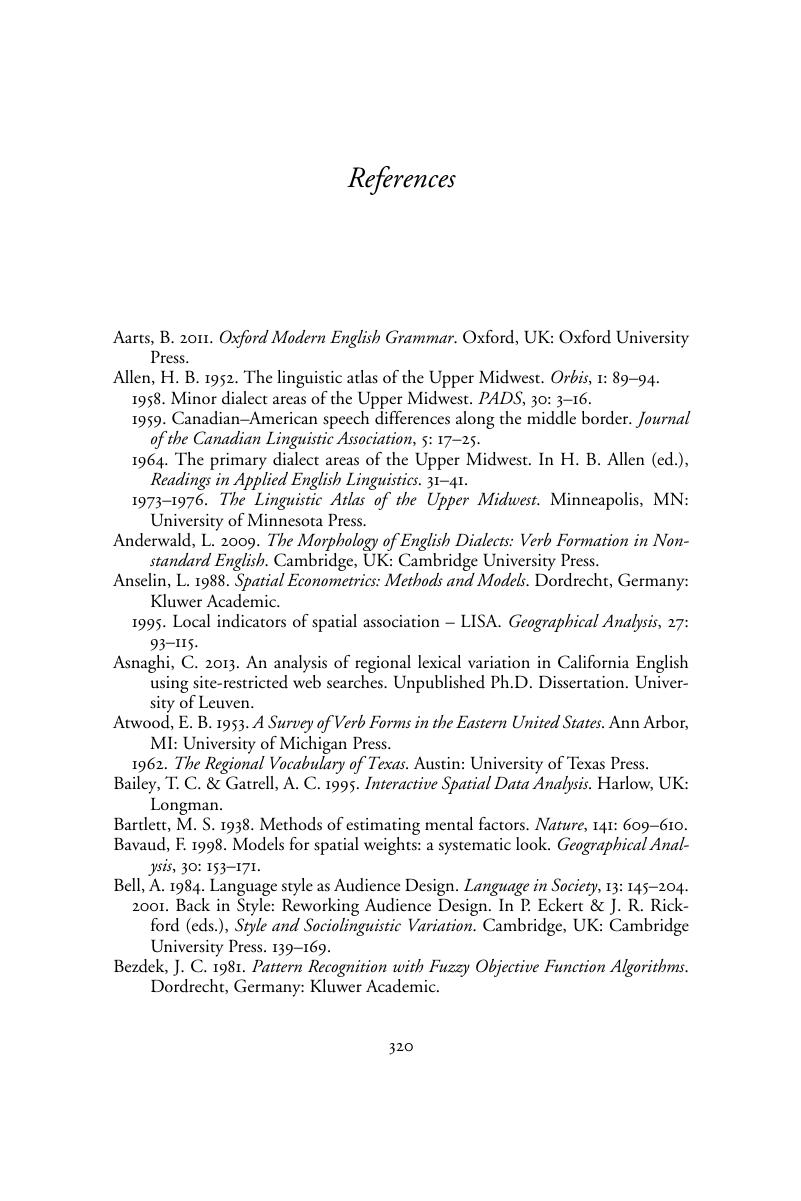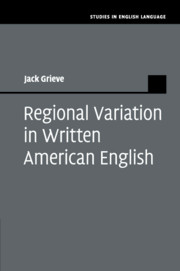Book contents
- Regional Variation in Written American English
- Studies in English Language
- Regional Variation in Written American English
- Copyright page
- Dedication
- Contents
- Figures
- Tables
- Book part
- Chapter 1 Introduction
- Chapter 2 Corpus
- Chapter 3 Grammatical analysis
- Chapter 4 Spatial analysis
- Chapter 5 Multivariate analysis
- Chapter 6 Sources of regional linguistic variation
- Chapter 7 Conclusion
- Appendices
- References
- Index
- References
References
Published online by Cambridge University Press: 05 January 2016
- Regional Variation in Written American English
- Studies in English Language
- Regional Variation in Written American English
- Copyright page
- Dedication
- Contents
- Figures
- Tables
- Book part
- Chapter 1 Introduction
- Chapter 2 Corpus
- Chapter 3 Grammatical analysis
- Chapter 4 Spatial analysis
- Chapter 5 Multivariate analysis
- Chapter 6 Sources of regional linguistic variation
- Chapter 7 Conclusion
- Appendices
- References
- Index
- References
Summary

- Type
- Chapter
- Information
- Regional Variation in Written American English , pp. 320 - 329Publisher: Cambridge University PressPrint publication year: 2016



